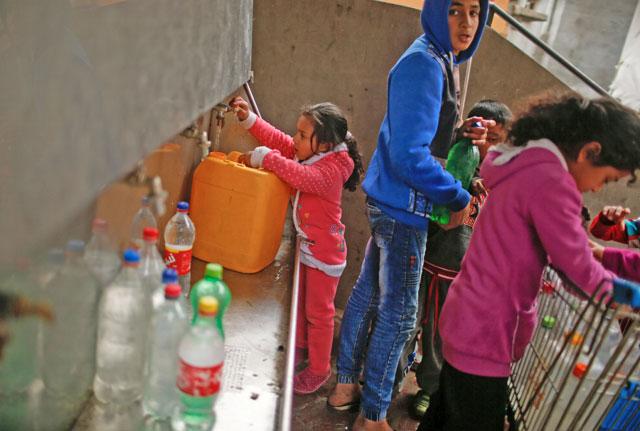CHARLESTON, West Virginia — More than 300,000 residents in West Virginia spent a third day with no safe drinking water because of a chemical spill and they may not be able to shower or drink from the tap for days to come, an official said on Saturday.
Governor Earl Ray Tomblin said there had been progress in the last 51 hours, and particularly on Saturday, but officials could not say when the ban might be lifted for the nine counties and the state capital of Charleston, the state’s largest city. As much as 18,927 litres of industrial chemical leaked into the Elk River on Thursday.
“Right now, no water is safe,” said Jeff McIntyre, president of West Virginia American Water Co. It could be days before water quality meets federally mandated quality standards, he said.
The spill of 4-methylcyclohexane methanol, or Crude MCHM, came from a tank belonging to Freedom Industries, a Charleston company that produces specialty chemicals for the mining, steel and cement industries, authorities said.
Mike Dorsey with the state’s Environmental Protection Department said crews were using shovels, excavators, barges, vacuum trucks and other equipment to contain the spill.
“Every possible method of remediation for that kind of spill is being employed out there right now,” Dorsey said.
The amount of MCHM in the water was decreasing by late Saturday, but is not yet consistently low enough for people to safely use the water, said Lieutenant Colonel Greg Grant from the West Virginia National Guard.
The regional ban on using tap water will be lifted one area at a time as officials work to meet the one part-per-million requirement set by the federal Centers for Disease Control and Prevention, said McIntyre of West Virginia American Water Co.
Officials have said chemical levels in the water were declining, but the spill forced schools and businesses to close in Charleston and surrounding communities.
President Barack Obama issued an emergency declaration and the Federal Emergency Management Agency sent 75 tractor trailers filled with bottled water to distribute, with National Guard assistance, to the more than 300,000 people unable to use their tap water.
FEMA said it had by Saturday sent about one million litres of water to the area and more water was to be delivered on Saturday night and Sunday to supplement what is available in the private sector, officials said.
Five admitted
to hospitals
So far, 73 had gone to area emergency rooms and five had been admitted for observation, said Secretary Karen Bowling of the state Department of Health and Human Resources.
Their symptoms included nausea, vomiting, dizziness, diarrhea, rashes and reddened skin, officials said.
Water carrying the industrial chemical has an odor like licorice or anise.
The contamination has forced area restaurants to close, but officials are working on a plan to allow some eateries to reopen if they can prove they have a source of safe water, said Dr. Rahul Gupta, the health officer at the Kanawha-Charleston Health Department.
“We’ll review those plans, and after we verify, we’ll reopen businesses on a case-by-case basis,” Gupta said.
For some residents, enduring another day without access to running water, the wait was too long.
Russell Anderson, who lives down the street from the spill, said he spent his Saturday stocking up on bottled water supplies at a Rite Aid drugstore.
“It’s been a real pain,” he said. “I just took a shower yesterday. I’m fighting a cold right now and I just couldn’t go without, so I took my chances.”
Local officials helping out with distribution of bottled water said they have had a hard time keeping up with demand.
“Really the biggest challenge has been running out and having to wait 10 to 15 minutes before we can get some more,” said Kanawha County Sheriff Deputy Jed Walls.



















